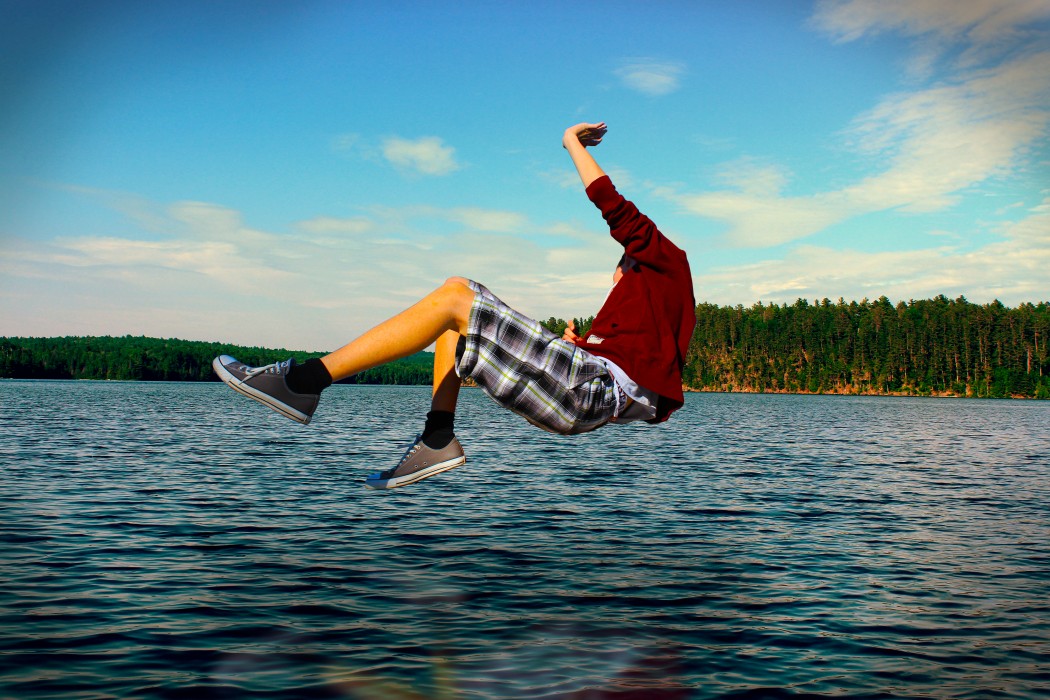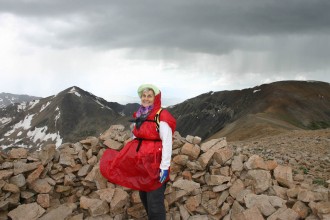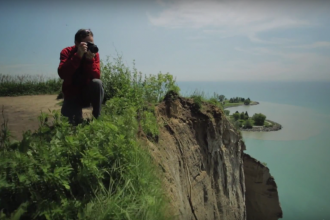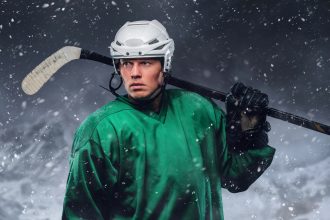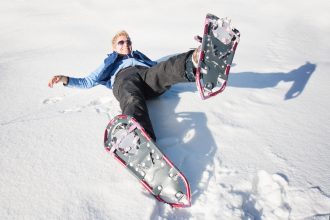Nothing captures a memorable cottage moment like a well-timed action shot. Whether it’s your daughter wakeboarding for the first time, your dog jumping joyfully off the dock, or your first family bike ride of the summer, a good action shot can help a memory live on forever. But since capturing those fleeting moments can be tricky, here are a few pro tips to help you capture the action.
Get to know your presets
Most digital cameras these days come with a bunch of presets. These are settings that allow you to get the most out of your camera, without worrying about how to set it up. The “sports” setting is best for action shots and is generally represented by a person running or jumping on your dial or LCD screen. On this setting, your camera will use a high shutter speed to capture the action and definitely works best on sunny days.
That simple setting should work for most applications, but if you’d like to take control of your images and get a little more advanced, try some of the tips below.
Set it up
There are some basic camera settings that really help you capture action. The main one of these is shutter priority. Most cameras have a dial with P, A, Tv, and M, or some combination thereof. Shutter priority is usually “Tv.”
This setting allows you to control your shutter speed while the camera takes care of the rest.
What is shutter speed? Simply, put it’s the amount of time the camera let’s light into the camera. It’s broken down in fractions of a second. So if your LCD reads 30, that means it’s 1/30 of a second. That’s too slow to capture action.
To fix this, use your dial to make that number larger. Legendary windsurfing photographer John Carter recommends setting it to 1/500 of a second and forgetting it. This means the shutter opens and closes in 1/500 of a second, allowing it to freeze the action. This setting always works on sunny days and is a go-to setting for a lot of good photographers.
Crank up the ISO when light is low
Of course, the fact that you’re shooting action doesn’t always mean the sun is shining. Sometimes it’s overcast, or maybe the sun is just going down. This is when the shutter priority trick might fail you. Because there’s less light to reach your sensor, 1/500 of a second may be too fast to get a decent exposure.
If the “500” on your LCD is flashing and your camera won’t let you take the shot, this means there isn’t enough light to use such a fast exposure. A workaround here is to start cranking up the ISO.
What’s ISO? This term is a holdover from the days of film, but it basically refers to the sensitivity of your sensor. 100 ISO is standard sunny-day film speed, while ISO 3200 is for a room with candles. Try cranking up the ISO until the 500 text is no longer flashing and then fire off a test shot. If the image is still too dark, crank up the ISO some more and try again.
The downside to cranking up your ISO is that the image will become more and more grainy the higher you go. You want to increase it the minimal amount but still get a good exposure. Trial and error is the best way to learn what works for conditions with less light. And try to remember to put your ISO back to 100 when it’s sunny again.
Anticipate where the shot will be
Focusing your action-filled subject can be challenging. But there are ways to do it. Many cameras won’t focus fast enough to follow the action and get great shots, so the way to compensate for that is by pre-focusing. To do this, you must predict where the action will be and focus the camera on that spot before your subject gets there. Do this by focusing your camera where you want to get the shot; then switch your camera to manual focus and wait for your subject.
Pre-focusing is a great technique if your subject is coming straight at you, but you may need to practise in order to nail the shot. And since you’re practising, your subject will have to do it multiple times. Don’t be afraid to ask them for a do-over.
Master the art of panning
Following the action as it moves past you is a great technique for capturing movement. When panning is done properly, the subject will be in focus and the background will be blurred and streaked. To do this, use your shutter priority again, but slow the shutter down this time. Not really slow, because you still want your subject to be in focus, but slower than 1/500. Try 1/125 in sunny conditions. See what you get and then try it either faster or slower.
A really good auto-focusing camera would be ideal in this situation, but if your camera is struggling to keep up in the viewfinder, you may have to settle on pre-focusing and pick your spot.
Avoid “man in the sky” syndrome
Composition and context are everything. For example, try to avoid shots of people jumping on a trampoline with nothing but sky in the background. These shots are rarely captivating because they don’t tell the full story. And if your photo doesn’t tell the story of what’s going on, then it doesn’t really serve its purpose. In most cases, you can fix this by including some foreground. If it’s a mountain biker going off a jump, include the jump, or capture the landing. You can also try to include some of where the subject is looking in the photo, so when our eyes follow theirs, we know what’s going on.

